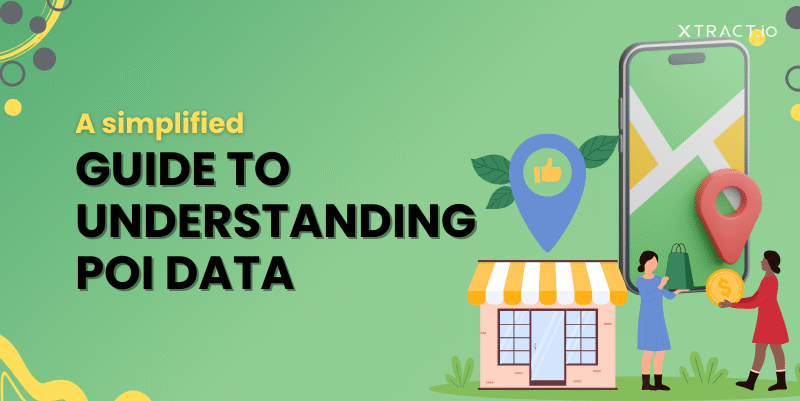Expanding to a global market is, undoubtedly, considered a landmark achievement. This also serves as a hallmark that a startup possesses advanced goodwill, international recognition with clients, is a brand, has multiple streams of income, fresh clientele, and positive contributing attributes. New branding and market expansion efforts are targeted towards gaining additional customers. However, along with these appendages of fresh and visible resources, expansion efforts tend to fail, but why?
The problems faced during misalignment tend to vary. In this example, we have stressed too much on sales bustling activities, which in gentler terms refers to outbound strategies that are required to sell and market in addition to the foundation which will allow smooth sailing in the long run. Simply put, in the world’s euphoric global market, competitive excitement often blurs the line between what’s strategically necessary and what’s merely reactive in regional sales operations.
My experience scaling enterprise platforms Publicis Groupe and launching regional GTM efforts at PolyAI. The lesson is profound: to be able to achieve any level of global scaling, speed is not the priority; building a sustainable infrastructure is.
Step 1: Technical readiness — data, processes, and scalability
Trying to scale technical products globally requires understanding your data processes and compliance first. Can you handle multilingual datasets? Are you able to support additional cloud instances? If you’re expanding an existing product, are there components of your tech stack that are only available in a given country or region? These are basic questions to explore before even assessing a specific commercial opportunity abroad.
Key technical challenges
- Data sovereignty and regional compliance: Germany implements GDPR, Brazil has LGPD, and Canada has PIPEDA- each impose restrictions on the storage and processing locations of Data. Without region-agnostic, responsive, and dynamically orchestrated infrastructure with advanced orchestration capabilities, growth rapidly stagnates.
- Clean, interoperable data pipelines: Having region-specific analytics, differentiated content such as marketing materials translated into various languages, and numerous CRM instances all add up to global operations. In the absence of a defined documented workflow, everything would be in chaos with no standardized reporting leading to paralysis in decision making.
- Internal documentation and handoffs: Distinct regional groups can apply diverse versions of the internal technology stack. Consistent execution requires defined change management workflows and clearly delineated onboarding documentation.
The lesson? As with all other components, global operational readiness starts at the bottom. Regardless of how enticing the marketing is, the claim built infrastructures need robust GTM efforts. Adopting the appropriate infrastructure is just the starting point; after establishing the foundation, it has to make sure that what the companies intend to put in the market is actually relevant to the region, which is for commercial validation to smooth the way as the next step, “converting the technical preparations into real business opportunities.”
Step 2: Commercial validation — market research and business cases
With the technological groundwork complete, focus now shifts to commercial validation. During my time with PolyAI, I saw that every new region had a detailed business case which looked at regional custom spending patterns, peak buying seasons, and pricing attention.
Moreover, the temptation to fall into the “one size fits all” home country GTM approach is undeniable, but constructed regional buyer personas and prevailing cultural power dynamics differ greatly. An automated voice assistant offering for insurance in the UK (US) might work, but German procurement processes require much deeper technical validation.
Key commercial variables
- Understanding local customers: Addressing the business pain points of the most relevance in the region are crucial to align your value proposition.
- Pricing tactics: The pilot-versus-roll-out decision can pivot on the competitive currency context, some PR, and local purchase power.
- Localized sales support: Simply translating the decks is beside the point, you need frameworks based on reality for local culture and the prevailing business climate.
This does not mean that the stage has been completed perfectly, but rather that a form of local adaptability is respectful of attempting, iteration, and approach modification. It is tremendously tempting to go straight to execution the moment a market becomes commercially attractive, but there is one part you must never overlook which acts as your groundwork: all legal and compliance considerations, which are often the first step bottlenecks.
Even when commercial and technical teams are in perfect harmony, overlooked legal and structural gaps can bring progress to a standstill. Addressing these gaps is what transforms sustainable traction into scalable, long-term growth
Step 3: Legal and compliance alignment — Preparing the groundwork for sustainable growth
A business can do its best in optimizing operations, however, if legal and compliance is the final step to be completed, then such effort is futile. Legal and compliance tend to be perceived as the ‘long pole’ which sluggishly propels the scaleup’s launch or the propellable deals drag, causing deal flow to be on pause.
Key legal constraints
- Localization of contracts: Liability clauses, data privacy provisions, and payment provisions differ from one region to another. In most regulated jurisdictions, a standard MSA won’t work with the market.
- Data residency laws: Germany, Australia, and India impose strict regulations on where customer data can be stored. The cloud architecture must be compliant with these laws.
- Employment law: Hiring employees from these locations also means dealing with their labor laws, employee benefits, termination procedures, and a slew of other issues usually at considerable expense.
The integration of legal divisions at the very beginning is crucial. When there is a clear compliance strategy to begin with, it is usually faster and cheaper to plan for compliance rather than attempting to correct mistakes later.
When the company knows it has the proper legal foundations and guarantees to work within the applicable laws of the country, the next step is the execution, but with execution to the last detail. Expansion plans should be executed by scaling availability, but before that, there should be comprehensive public testing. These tests should serve to generate excitement internally and externally while refining the offering.
Step 4: Phased launches – Pilots, feedback mechanisms, and cultural adjustment
With infrastructure and legal prerequisites satisfied, the next step is not a widespread release, but rather a carefully planned pilot. At PolyAI, these pilots often took equal effort to design as full enterprise deployments, which is expected.
The expenditure and profit of pilots
- Economic Investments: For even one client, bespoke integrations, multilingual support, and analytics dashboards for detailed analytics must be provided.
- Localized insights and reporting: Dashboards must represent local and significant KPIs. In-market value add analytics is a must.
- Cultural understanding: A pilot program’s failure might not stem from poor product quality, but rather from a lack of fit within regional workflows.
If implemented correctly, pilots function as preparatory footholds that unlock subsequent access to the market and validate the company’s regional execution capabilities to plan, resource, and operationally execute at a sub-country level.
If implemented incorrectly, pilots can lock options out and stifle growth. This is why cross-product, legal, engineering, and sales alignment are critical to blue door a pilot.
World-wide reach doesn’t happen at breakneck speeds, or in a continuous stretch of running. It’s a relay with multiple tracks requiring successful transitions between legal, product, engineering, and GTM for optimal results.
Publicis and PolyAI purely serve as great examples, especially because they did not aggressively advertise or market their products. They chose to step back and ensure that they met all the necessary requirements instead of merely completing them, such as booking a rush towards technical readiness, aligning regulations, or validating commerce.
Surely the inflexible equation is simple as follows: Global Success = Technical Foundation X Commercial Execution X Legal Resilience
That said, striving to achieve global reach is not simply all out aggressive effort. In fact, it is smart strategic planning. Success begins with thoughtful design, which must come before everything else.
About author: Jenn Cunningham, a Go-to-Market Lead, Strategic Alliances at PolyAI. Currently, she leads strategic alliances at PolyAI, where she manages key relationships with AWS and global consulting partners while collaborating closely with the PolyAI cofounders on product expansion and new market entry. Her unique journey from data science beginnings to implementation consulting gives her a front-row seat to how legacy businesses are leveraging AI to evolve and thrive.

